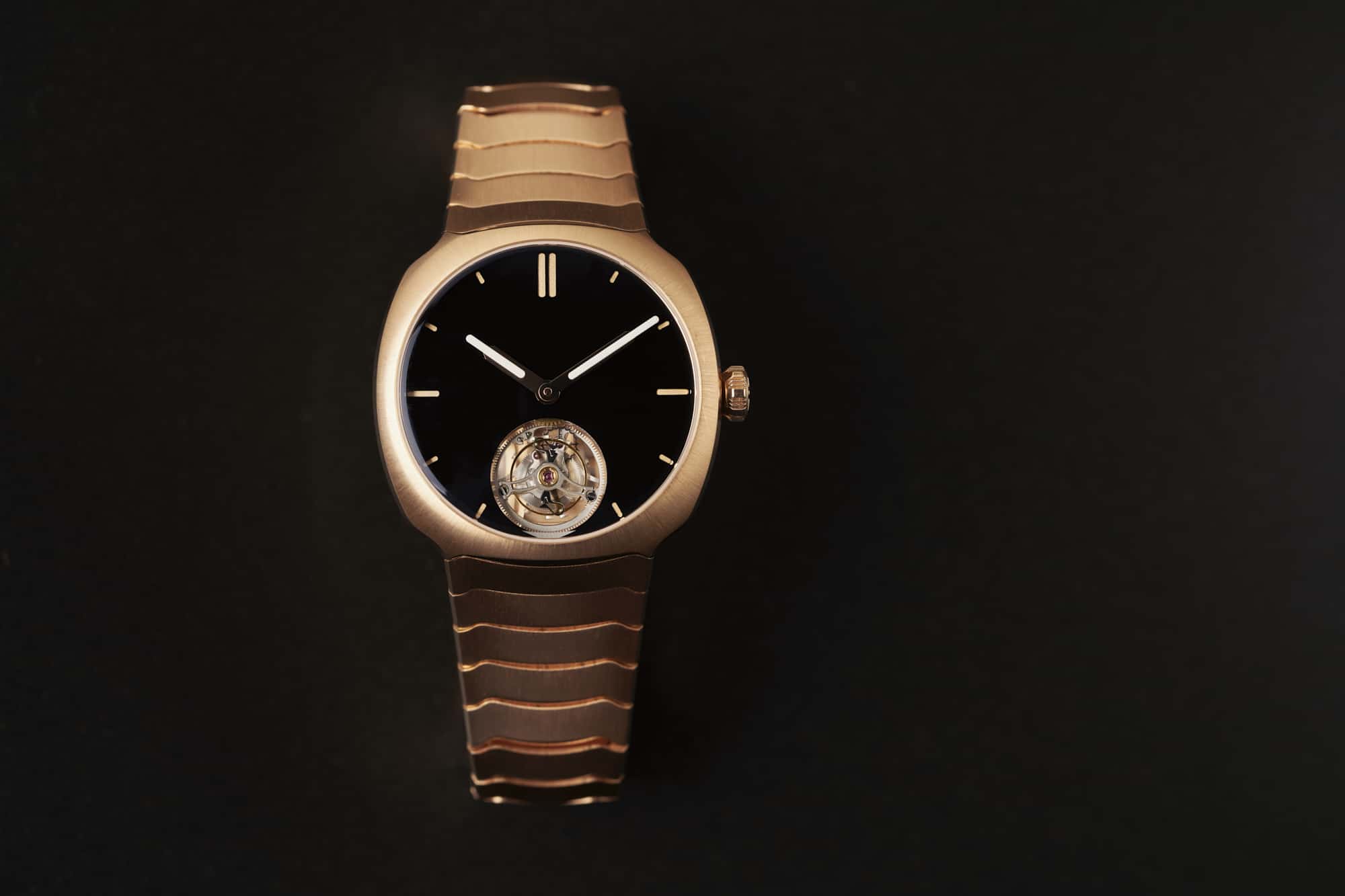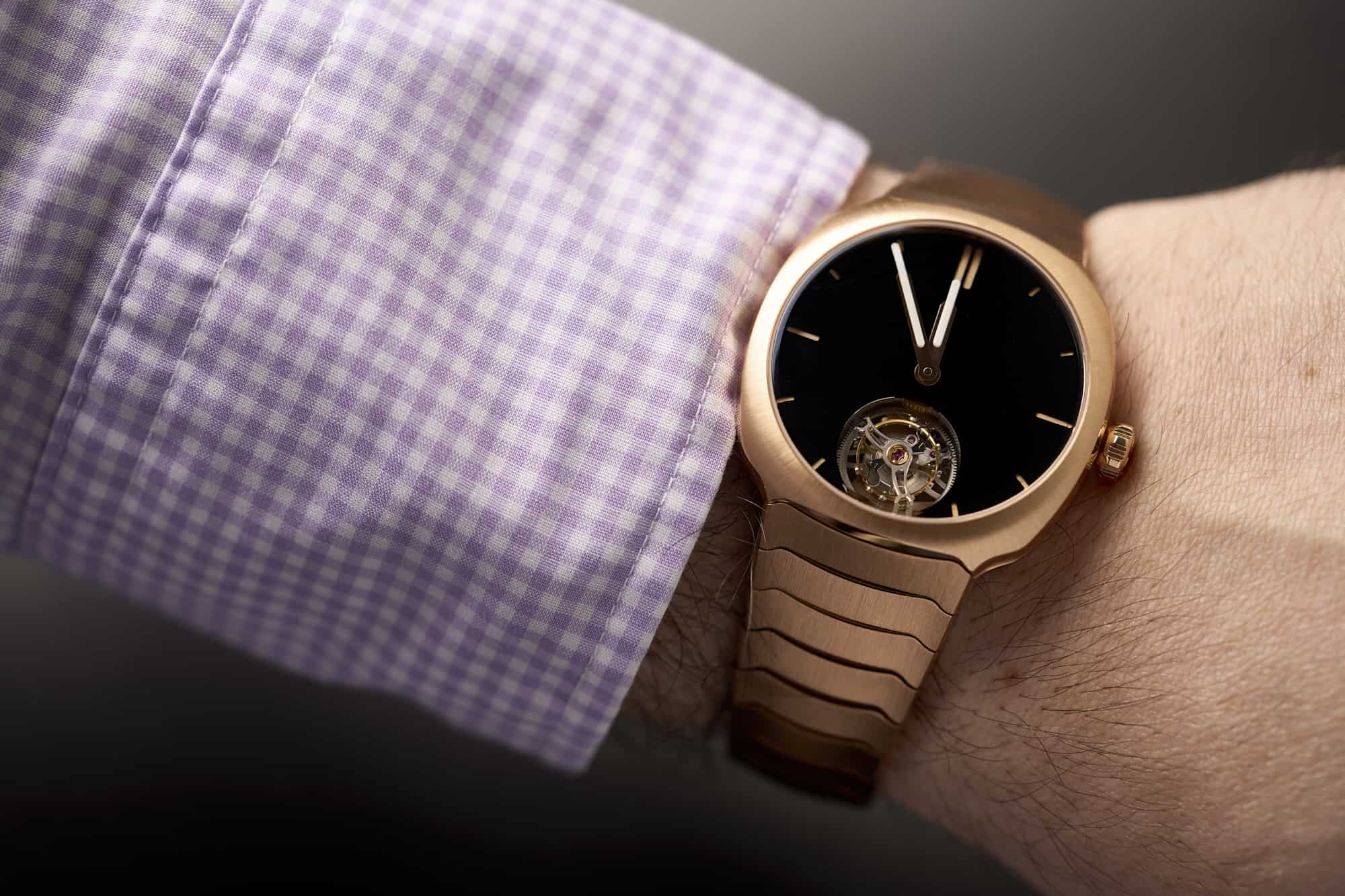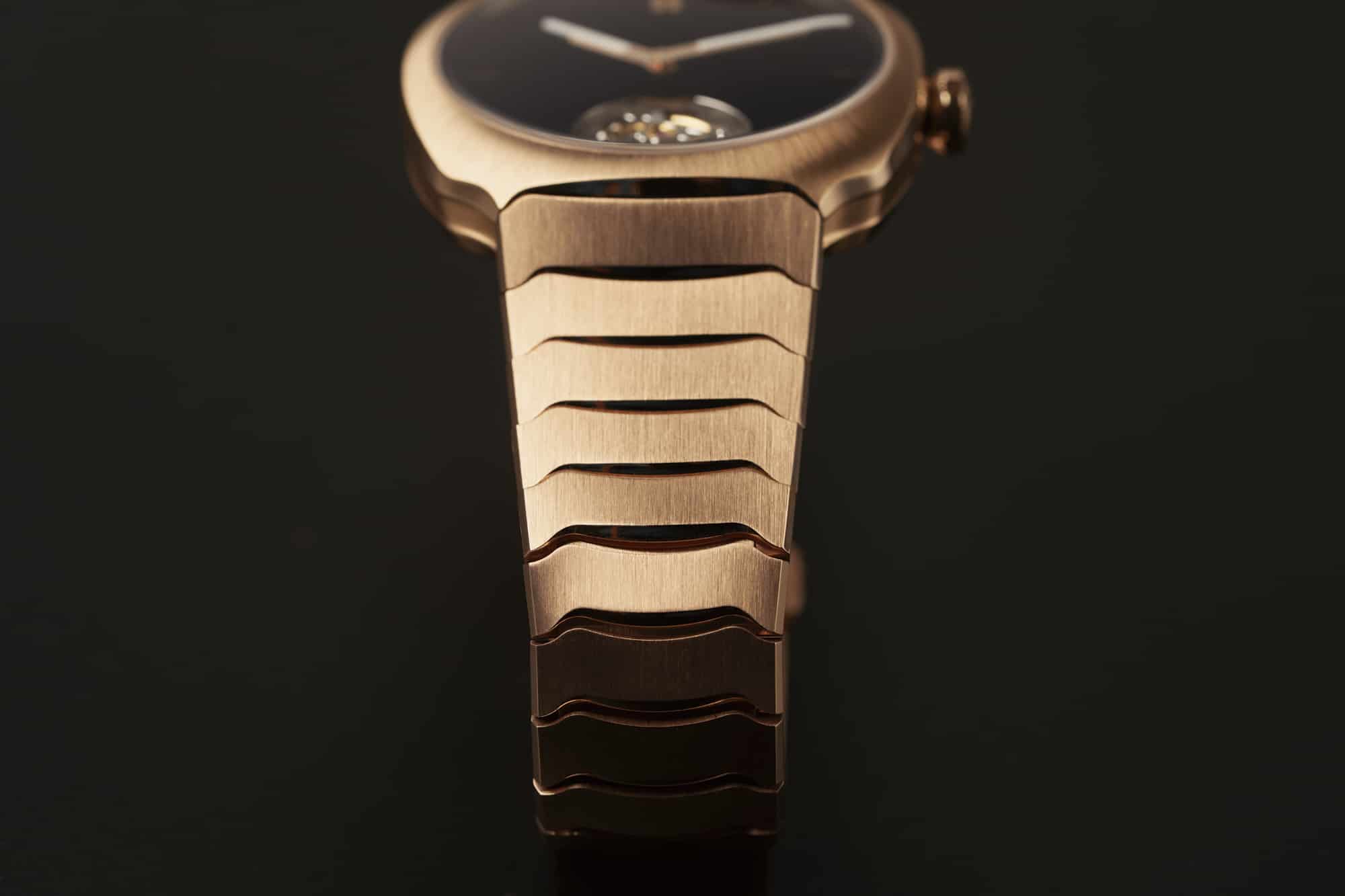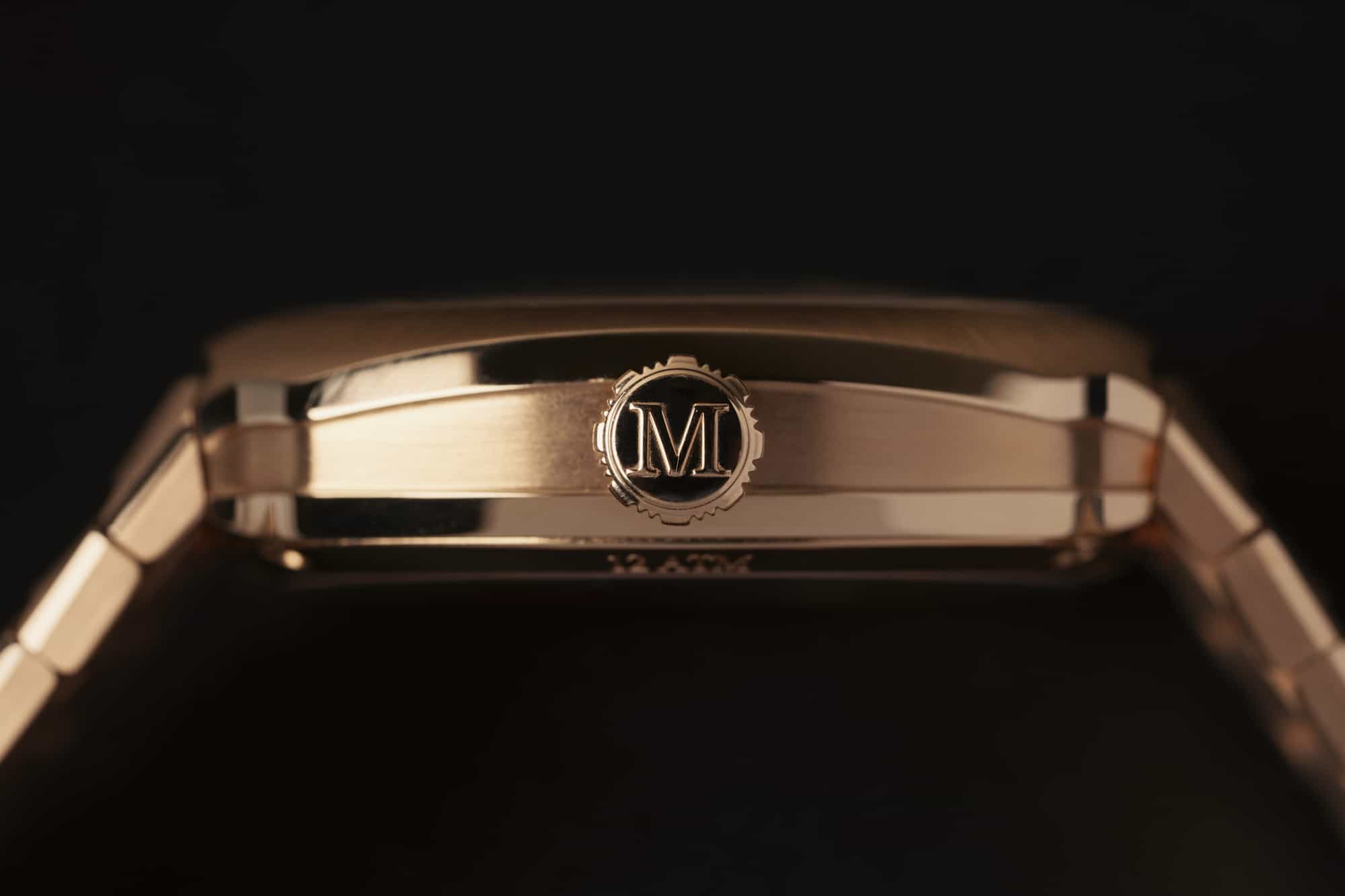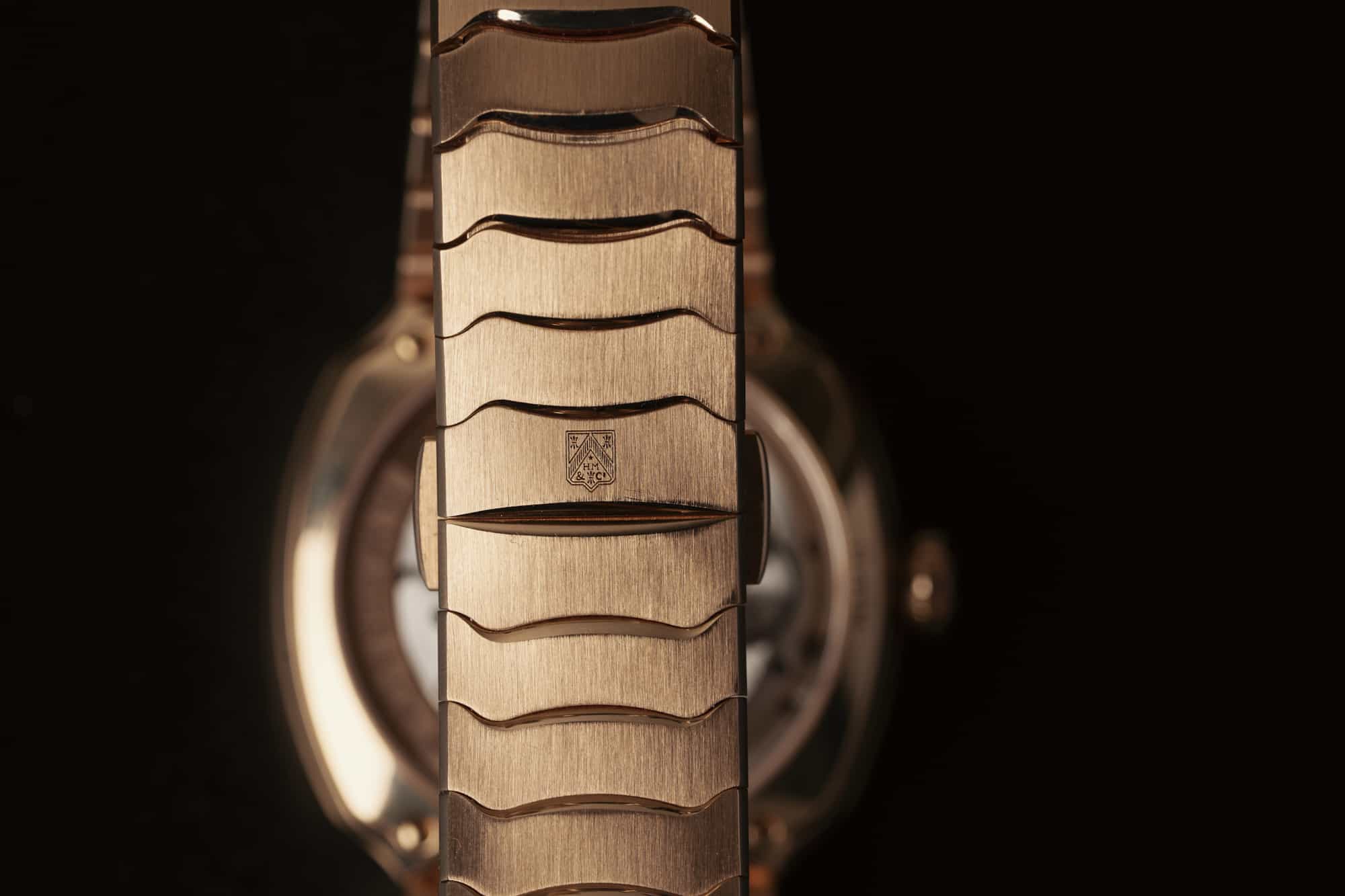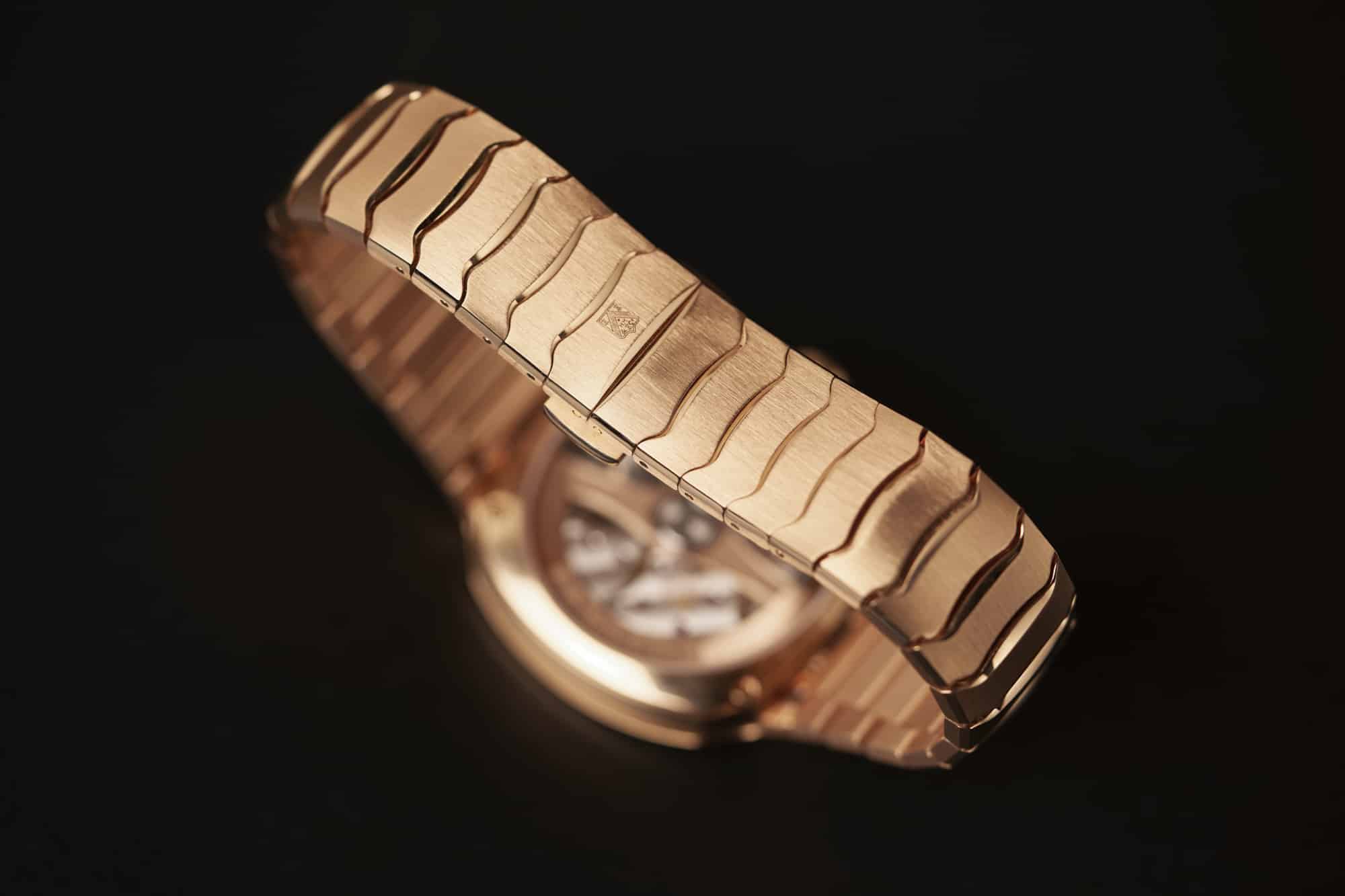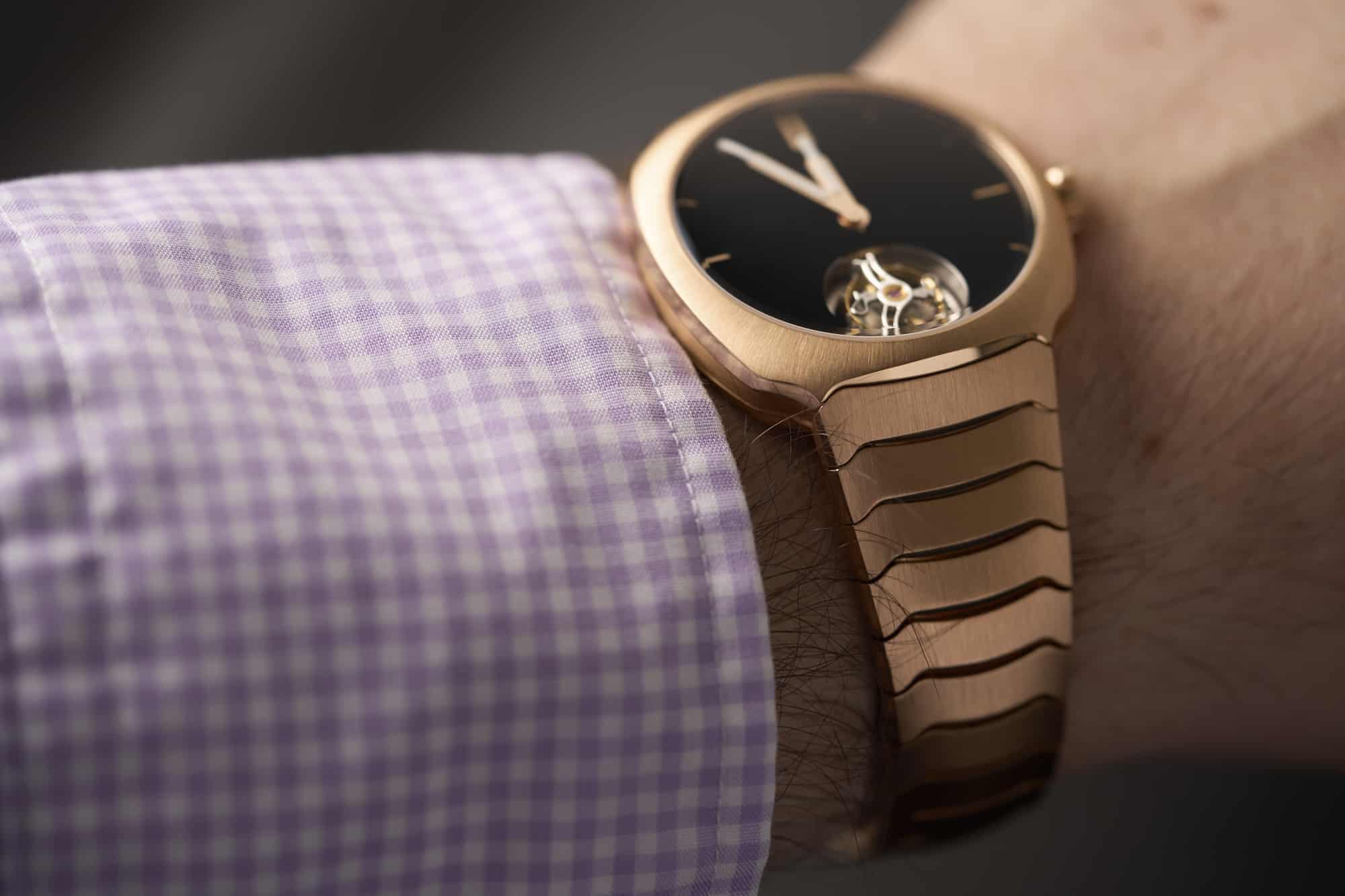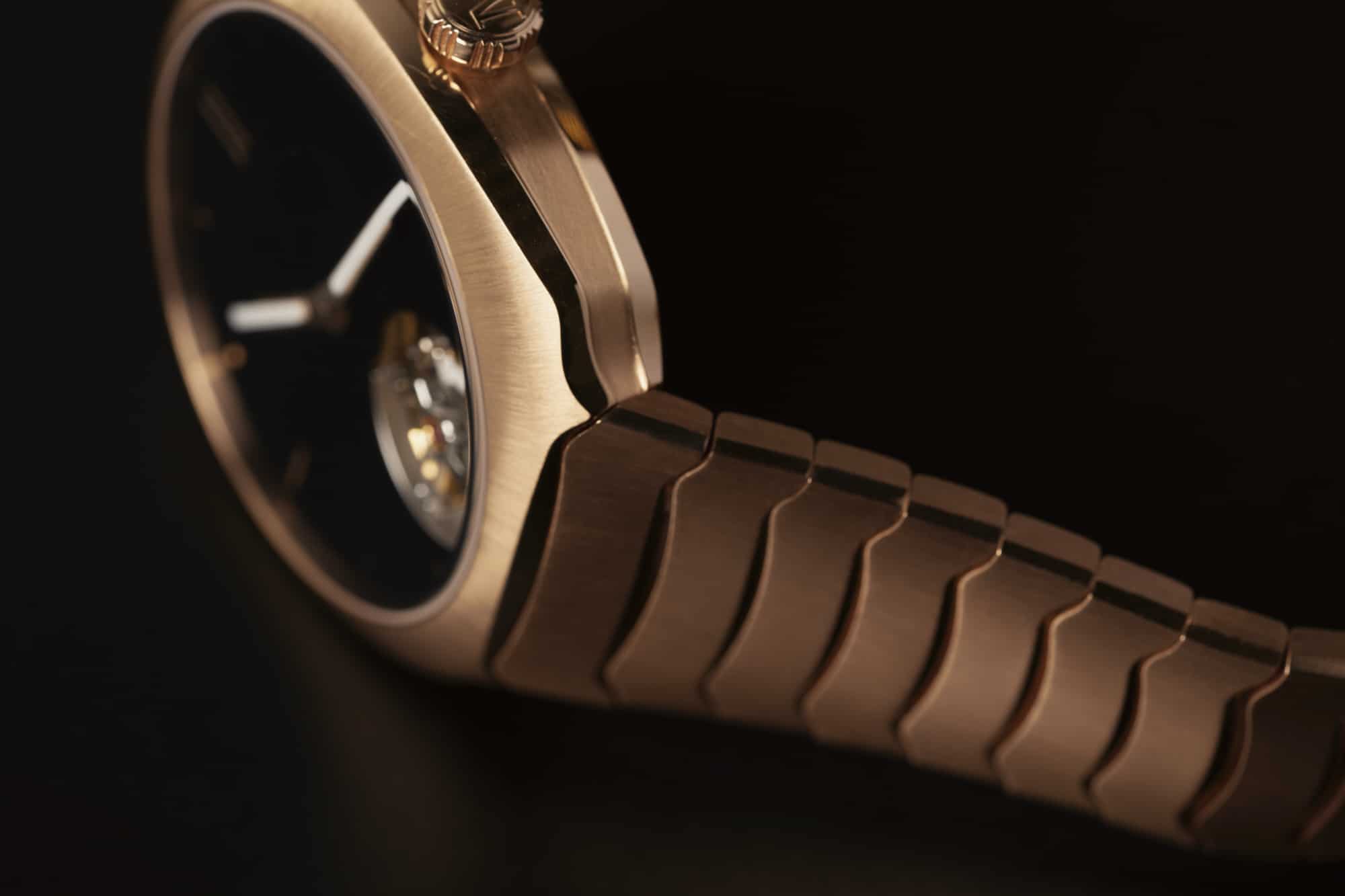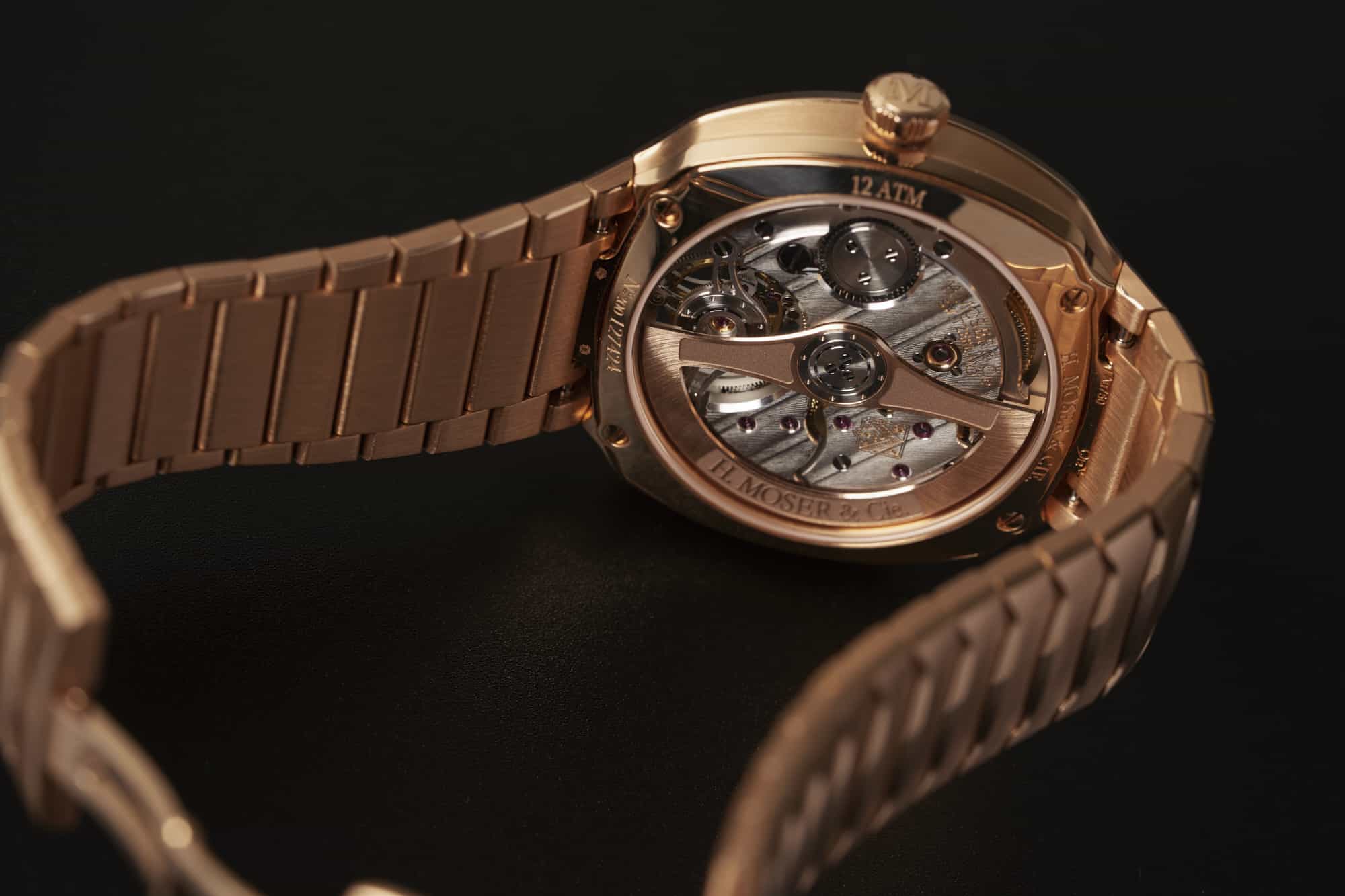Honestly, I don’t really know how to evaluate a watch like this. The H. Moser & Cie. Streamliner Tourbillon Vantablack is unlike any watch I’ve taken in for review to this point. Yes, it’s by far the most valuable watch anyone has entrusted to me. But even beyond the absolutely terrifying financial implications, it has more than its fair share of design quirks that set it apart from other Mosers, and most other watches. What I realized after a few days of (carefully) wearing this Streamliner is that its mouthful of a name, while not exactly rolling off the tongue, is essential in highlighting the critical mass of bonkers watchmaking happening here.
The Streamliner concept was introduced in 2019 and in short order has become an H. Moser signature. If it’s not their most sought after piece, it certainly seems to be their hardest to get based on secondary market trends, with gray market prices easily exceeding the MSRP. It’s no wonder the Streamliner, whether in time only, chronograph, or perpetual calendar form, is such a tough ticket: it’s Moser’s sportiest watch by a wide margin, and – I don’t know if you’ve heard – sports watches are still really popular.









 Featured Videos
Featured Videos




